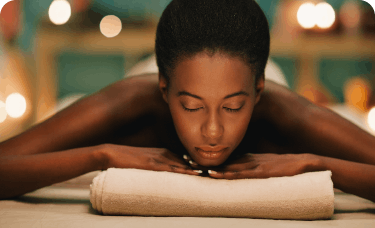These daily moves target specific upper-back muscles to ease tension and tightness.
You’ve got pens, a keyboard, sticky notes and a to-do list on your desk. You may want to add a tennis ball to the mix.
Why, you ask? Because a tennis ball, when used for a stretching exercise, could be a tool in your arsenal to help relieve neck and shoulder pain. This common type of pain will affect many people at some point in their life — and two possible causes include prolonged sitting and working in the same position for a long time.1,2
“There is talk that sitting is the new smoking,” says Dr. Kevin Lynch, a chiropractor based in Lexington, Ky. “For America, it’s a big challenge.”
What’s more? Tension headaches may often co-exist with neck and shoulder pain. Specifically, studies show that tension-type headaches often occur alongside an increase in tenderness in the neck and shoulder muscles.3
But there are steps you can take to help ease pain while at work. Lynch advises using a 30/30 rule, where you set a timer on your computer, then get up every 30 minutes to stretch or walk to the water cooler. The idea is that after 30 minutes in the same position, you start to let you posture go. So if you move around a bit, you’ll have better posture for the following 30 minutes. Another option? Try one of these office exercises, suggested by L.A.-based personal trainer Astrid Swan McGuire.
Office Exercise 1: Tennis Ball Stretch
Place the tennis ball in the area between your neck and shoulders and sandwich the ball with your body against your office wall or door. Hold for 15 seconds before you start gently rolling across your upper back and shoulders. You can also use a Trigger Point Therapy Ball for this desk exercise. But one point for the tennis ball: It’s portable. “I always travel with one and keep one in my gym bag,” says McGuire.









